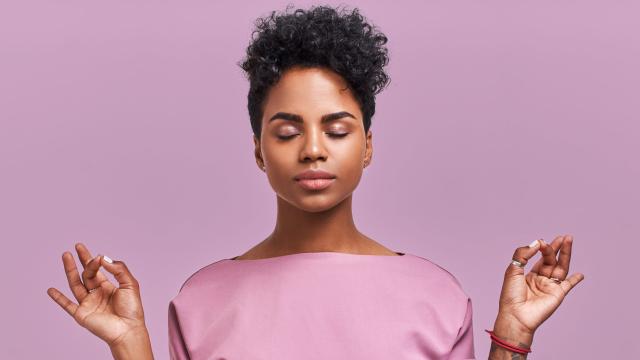For the next few weeks, I’ll be taking over the Lifehacker Fitness Challenge by developing a healthy meditation routine for mental and physical wellness. The idea of meditation is actually quite stressful for me, so attempting to clear my mind (which is continually racing) has always been anxiety-inducing. I’ve actually never been great at managing stress — even while travelling, I tend to give myself a packed itinerary of forced relaxation, defeating the purpose.
But when I repeatedly heard that consistent meditation has its benefits, ranging from better productivity to reducing anxiety and improving physical health, I decided to face my stress head-on by challenging myself to try it for 30 days.
Starting slow reduced my initial anxiety
There’s Zen, Mantra, self-guided meditation, and more, but finding a new routine has never been an issue for me; staying consistent and working through obstacles is. To combat my bad habits, I decided to use guided meditation as my jumping-off point. I downloaded Headspace, which came recommended by friends and currently has a miniseries on Netflix, and bought a monthly membership for $17 a month after a seven-day free trial.
I wanted to begin slowly with only three minutes before starting my workday. I chose the beginners track and used noise-cancelling headphones to avoid interruptions, and would sit in my IKEA Poang chair as I set up the app on my phone. Headspace has a wonderful feature that allows you to choose a mediation guide, and I chose the woman named Dora who was a featured teacher on the beginner’s track.
[referenced id=”1043070″ url=”https://www.lifehacker.com.au/2021/01/how-im-using-sleep-tracking-to-improve-my-fitness/” thumb=”https://www.gizmodo.com.au/wp-content/uploads/sites/4/2021/01/16/ix96hbfrwy35usheb7w9-300×169.jpg” title=”How I’m Using Sleep Tracking to Improve My Fitness” excerpt=”For the past few months, I’ve been wearing an Oura ring to track my sleep. In December, I added a Whoop band for comparison’s sake. I was curious about them because I’ve seen so many athletes — professional and recreational — say they use devices like these to monitor how…”]
The first seven days
After seven days of meditation, I found myself looking forward to my three minutes of guided stillness. I pushed myself into a habitual routine: wake up, check-in at work, make my bed, and then sit and meditate in my comfy corner. I didn’t allow myself to start the day without the three minutes to myself and listening intently to Dora.
To get started, she instructs you to sit upright with your feet flat on the floor and begin breathing, keeping a soft gaze, and on the third breath, you close your eyes. A friend of mine is engaged in decolonising spiritual work and always encourages me to position myself in a form ready to receive — meaning open palms and an open chest, so I included that in my daily routine as well.
Each session of Headspace’s beginner course uses a different metaphor to get you acquainted with the root of meditation. Sometimes inner thoughts are referenced as traffic going by; other times, clouds or a rushing river. After one week, I didn’t feel 100% calm and collected, but I learned how to begin my process, and the idea of meditation was no longer stress-inducing. I found it to be a productive way to begin my day and manage my racing mind.
The next week in my journey, I plan to increase my meditation time to five minutes, change the time of day, and see if a midday meditation feels any different. I hope to strengthen my meditation practice over the month, hopefully reaching 10 or even 15 minutes a day. And who knows, maybe I’ll eventually integrate meditation into my daily life for good.

Leave a Reply
You must be logged in to post a comment.